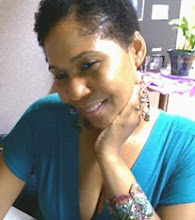Why I Write
My mother often reminds me that my dysfunction didn’t commence when I moved to the City of Angels, but began at the tender age of six or seven. Around that time, I started writing obituaries: “Kristy was killed by her father today…” “Timmy got ran over by the school bus…”
They were pretty morbid stories, the stuff that fills psychiatric files. But the carnage cluttering my literary landscape wasn’t the work of a burgeoning serial killer. Those dark eulogies were simply the means for a lonely little girl to exorcise childhood's demons.
By age 10, I started journaling. I remember trying to erect a time machine from a toy baby carriage and some miscellaneous items around
my grandmother’s house. I wanted to document my journey to the past, my voyage from a life of invisibility. It was at that time that I discovered Stephen King, Dean Koontz and the
Twilight series — teen horror paperbacks that my mom dismissed as “occult books.” I wasn’t fascinated by vampires or gruesome murders. What enchanted me was the ability of little girls to set a foe aflame from fifty feet, or telepathic teens who could levitate the school bully to another plain.
I grew up in a small town ten miles northwest of Philadelphia, and was often teased for “talking white.” While my cornrowed neighbors were jumping double Dutch on the sidewalk or hanging out on the stoop listening to Salt n Pepa, I was locked in my room penning the ‘hood version of
Carrie. I identified with King’s psychokinetic protagonist because she too knew how it felt to be the odd kid on the block.
I still feel like the odd kid, but now I’m learning to embrace my otherness. I enjoy writing essays and novels that celebrate that curious, disenfranchised and marginalized character — the dysfunctional black diva. Yet, I have trouble negotiating my love for the vapid and materialistic with the need to examine more political and intellectual matters. I felt conflicted for not blogging about the Jena 6 case, Bill O'Reilly’s off-color comments about black folks, or Megan Williams’ rape and torture by six white people in West Virginia. I’m sometimes plagued by the notion that I’m not intelligent or informed enough to critique relevant social issues. It’s not that I’m oblivious to racism, sexism, classism and other interlocking systems of oppression. It’s just that I’m more at home with essays that begin: “A funny thing happened on the way to my colonics appointment …”
When I write about the comedic but mundane, I worry that I won’t be considered a conscious writer. I appreciate the politics of Fanon, Cornel West, bell hooks, The Last Poets and Gil Scott-Heron — in fact, I interviewed Scott-Heron when I lived in Baltimore after his set at the Arena Players. But I also spend hours reading Stephen King or perusing perezhilton.com. I’m an information junkie. I read feminist blogs, Latino blogs, gay blogs, conservative and left-wing blogs, black militant to evangelical Christian sites, Bossip to Slate, Crunk & Disorderly to Salon … and they all inform my writing.

Sometimes, I return home from a full-time job and sit at my laptop until four or five in the a.m. Writing is lonely work, but it’s also redemptive. I want to explore the struggles of women who not only battle bigoted bosses, but who also have hair care woes. Like bell hooks says, “There is a world of thoughts and ideas women have yet to write about in nonfiction — whole worlds of writing we need to enter and call home. No woman is writing too much. Women need to write more. We need to know what it feels like to be submerged in language, carried about by the passion of writing words.”
As trite as it sounds, writing is my passion. Little did I know that as I was killing off the neighborhood bullies in those childhood obituaries, I was also writing myself into existence. There is healing in humor, and I’ve found a safe place to be zany, reflective and vulnerable — all at the same time.
 Just checking in and making good on my commitment to write for three weeks straight. Since Monday, I’ve been posting here and on my other blog Crossing Sunset. For the mathematically challenged, I’m on day — or should I say night — number six. I have much love for those writers who have the discipline to sit at their computer and blog every day. It's challenging for a sista! I feel like I'm cheating because I usually labor over a laptop for hours on issues that I find meaningful, or at least humorous. But today I'm freestylin'.
Just checking in and making good on my commitment to write for three weeks straight. Since Monday, I’ve been posting here and on my other blog Crossing Sunset. For the mathematically challenged, I’m on day — or should I say night — number six. I have much love for those writers who have the discipline to sit at their computer and blog every day. It's challenging for a sista! I feel like I'm cheating because I usually labor over a laptop for hours on issues that I find meaningful, or at least humorous. But today I'm freestylin'.





